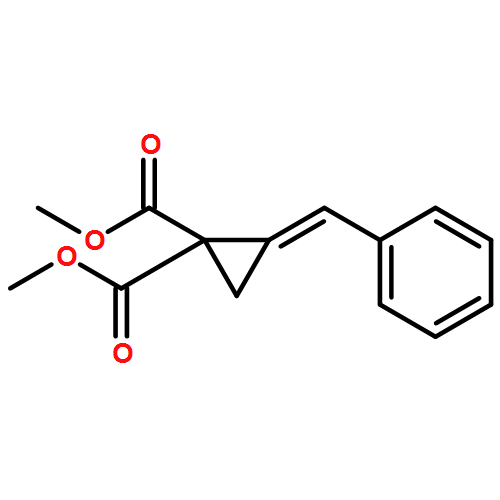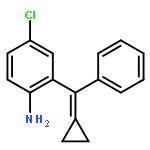Co-reporter:Yu-Ning Gao;Qin Xu;Yin Wei
Advanced Synthesis & Catalysis 2017 Volume 359(Issue 10) pp:1663-1671
Publication Date(Web):2017/05/17
DOI:10.1002/adsc.201700242
AbstractA new zwitterion generated from different electron-deficient alkenes and phosphines has been designed and its reactivity was explored. We demonstrated that this new zwitterion directed a novel [2+1+2] cycloaddition reaction between vinylpyridines and isatin-derived electron-deficient alkenes, affording spirocyclopenteneoxindole derivatives containing three stereocenters in moderate to good yields with good diastereoselectivities. A plausible mechanism has been proposed relying on preliminary mechanistic investigations and supported by theoretical calculations.
Co-reporter:Long-Hai Li;Yu Jiang;Jian Hao;Yin Wei
Advanced Synthesis & Catalysis 2017 Volume 359(Issue 19) pp:3304-3310
Publication Date(Web):2017/10/04
DOI:10.1002/adsc.201700936
AbstractN2-Selective autocatalytic ditriazolylation reactions of cyclopropenones and tropone with N1-sulfonyl-1,2,3-triazoles are reported for the first time. In contrast to previous methods for preparing N2-substituted bis(1,2,3-triazolyl) compounds, the present reaction achieved ditriazolylation in one step under simple and user-friendly conditions with a wide substrate scope. A plausible mechanism has been proposed relying on preliminary mechanistic investigations.
Co-reporter:Yu-Ning Gao, Min Shi
Chinese Chemical Letters 2017 Volume 28, Issue 3(Volume 28, Issue 3) pp:
Publication Date(Web):1 March 2017
DOI:10.1016/j.cclet.2016.12.001
Nucleophilic chiral phosphine catalysis has been prosperous in asymmetric synthesis over the past two decades. Various tunable chiral phosphines display excellent activity and selectivity in asymmetric transformations including acycloaddition reactions and cycloaddition reactions. Enantiomerically enriched cyclic compounds are ubiquitous in natural products and drug molecules. These phosphine-catalyzed reactions provide effective and extensive strategies for the synthesis of a series of complex cyclic compounds as well as the synthesis of chiral compounds which could be easily transformed to carbocycles and heterocycles. This minireview summarizes recent developments in this area and highlights meaningful breakthroughs.Download high-res image (147KB)Download full-size imageThis minireview summarizes chiral phosphine-catalyzed acycloaddition reactions and cycloaddition reactions to synthesize carbocycles and heterocycles.
Co-reporter:Yao-Liang Sun;Yin Wei
Organic Chemistry Frontiers 2017 vol. 4(Issue 12) pp:2392-2402
Publication Date(Web):2017/11/21
DOI:10.1039/C7QO00512A
Alkynones can be activated by phosphine as a nucleophilic catalyst, and then trapped by a series of trifluoroacetyl phenylamides to afford cycloaddition products. Through subtly adjusting the substituent of trifluoroacetyl phenylamides, the addition of water and changing the reaction temperature, two kinds of highly regioselective cycloaddition products were obtained in moderate to excellent yields. Plausible mechanisms were proposed and supported by the deuterium-labeling experiments and DFT calculations. DFT calculations demonstrate that the currently accepted intramolecular proton transfer processes involved in these reactions are impossible, and these proton transfer processes can proceed with the assistance of substrates containing an acidic moiety or by the addition of water. Our mechanistic studies provide reasonable explanations for the regioselectivity affected by the protic additive H2O, and the reaction temperature.
Co-reporter:Wei Fang;Yin Wei
Chemical Communications 2017 vol. 53(Issue 85) pp:11666-11669
Publication Date(Web):2017/10/24
DOI:10.1039/C7CC07042J
A novel gold(I)-catalyzed intramolecular tandem cyclization reaction of ortho-(arylethynyl)arenemethylenecyclopropanes provided an efficient approach to prepare functionalized 11H-benzo[a]fluorene derivatives in moderate to good yields. Further transformations as well as applications of the products have been presented and a plausible reaction mechanism has also been proposed on the basis of deuterium labeling and control experiments.
Co-reporter:Yin Wei and Min Shi
ACS Catalysis 2016 Volume 6(Issue 4) pp:2515
Publication Date(Web):March 7, 2016
DOI:10.1021/acscatal.6b00048
The latest advances in the field of gold-catalyzed divergent synthesis of carbo- and heterocycles are highlighted in this Perspective. These gold-catalyzed reactions, which can provide structurally novel carbo- and heterocycles, were achieved with good product selectivities, through subtle choice of substrates, catalysts, ligands, and counterions. The related reaction mechanisms are also discussed.Keywords: carbocycles; cycloaddition; cycloisomerization; gold catalysis; heterocycles
Co-reporter:Song Yang, Qin Xu, Min Shi
Tetrahedron 2016 Volume 72(Issue 5) pp:584-591
Publication Date(Web):4 February 2016
DOI:10.1016/j.tet.2015.11.064
An efficient and highly regioselective synthetic method has been developed for the preparation of novel cyclobutene-containing spiro[2.3]hexenes fused with six or seven-membered carbo- or hetero-cycles in good to excellent yields following a thermal induced intramolecular [2+2] cycloaddition of alkynone-vinylidenecyclopropanes or a sequential oxidation/thermal induced intramolecular [2+2] cycloaddition process of propynol-vinylidenecyclopropanes under metal-free conditions.
Co-reporter:Yuan-Liang Yang, Zhen Zhang, Xiao-Nan Zhang, De Wang, Yin Wei and Min Shi
Chemical Communications 2014 vol. 50(Issue 1) pp:115-117
Publication Date(Web):25 Oct 2013
DOI:10.1039/C3CC46470A
The reactions of cyclopropenones with nucleophiles (H2O or methanol) could be catalyzed by nitrogen-containing Lewis bases or phosphorus-containing Lewis bases, affording the corresponding mono- or multi-substituted allenic esters in moderate to excellent yields.
Co-reporter:Yang Liu, Min Shi, and Liang Deng
Organometallics 2014 Volume 33(Issue 20) pp:5660-5669
Publication Date(Web):April 1, 2014
DOI:10.1021/om5000612
The use of a biphenyl-linked bis(benzimidazol-2-ylidene) ligand enables the access of dialkyl-, diaryl-, and diallyliron(II) species with bis(NHC) ligation. Deprotonation of the biphenyl-linked bis(benzimidazolium) salt (1) with 2 equiv of KH affords the biphenyl-linked dibenzotetraazafulvalene 2 in high yield. Treatment of 2 with 0.5 equiv of [(TMEDA)FeCl2]2 leads to the formation of the biphenyl-linked bis(benzimidazol-2-ylidene)iron(II) dichloride 3. Further salt elimination reactions between 3 and 2 equiv of TMSCH2Li, C6H5CH2K, PhMgBr, 3,5-(CF3)2C6H3MgBr, C3H5MgCl, and 2-Me-C3H4MgCl yield the corresponding biphenyl-linked bis(benzimidazol-2-ylidene)iron(II) dihydrocarbyls, denoted as [bis(NHC)FeR2] (R = CH2TMS (4), CH2Ph (5), Ph (6), C6H3-3,5-(CF3)2 (7), η3-CH2CHCH2 (8), η3-CH2C(Me)CH2 (9)). Compounds 2–9 have been fully characterized by NMR spectroscopy, absorption spectroscopy, solution magnetic susceptibility measurements, elemental analysis, and X-ray crystallography, revealing that 3–7 are four-coordinate high-spin iron(II) compounds with a formal 14-electron count and 8 and 9 are diamagnetic bis(η3-allyl)iron(II) species with 18 valence electrons. Attempts to prepare the bis(hydrocarbyl)iron(II) complexes of bulky allyls lead to the isolation of mono(η1-allyl)iron(II) chloride, denoted as [bis(NHC)FeCl(η1-TMSCHCHCHTMS)] (10), in low yield, whose structure has also been established by an single-crystal X-ray diffraction study. The achievement of the syntheses of these bis(hydrocarbyl)iron(II) compounds proves the unique electronic and steric features of the biphenyl-linked bis(benzimidazol-2-ylidene).
Co-reporter:Yuan-Liang Yang, Zhen Zhang, Xiao-Nan Zhang, De Wang, Yin Wei and Min Shi
Chemical Communications 2014 - vol. 50(Issue 1) pp:NaN117-117
Publication Date(Web):2013/10/25
DOI:10.1039/C3CC46470A
The reactions of cyclopropenones with nucleophiles (H2O or methanol) could be catalyzed by nitrogen-containing Lewis bases or phosphorus-containing Lewis bases, affording the corresponding mono- or multi-substituted allenic esters in moderate to excellent yields.







![(Acetonitrile)[(2-biphenyl)di-tert-butylphosphine]gold(I) hexafluoroantimonate](http://img.cochemist.com/ccimg/866700/866641-66-9.png)
![(Acetonitrile)[(2-biphenyl)di-tert-butylphosphine]gold(I) hexafluoroantimonate](http://img.cochemist.com/ccimg/866700/866641-66-9_b.png)










![Gold,[[1,1'-biphenyl]-2-ylbis(1,1-dimethylethyl)phosphine]chloro-](http://img.cochemist.com/ccimg/854100/854045-93-5.png)
![Gold,[[1,1'-biphenyl]-2-ylbis(1,1-dimethylethyl)phosphine]chloro-](http://img.cochemist.com/ccimg/854100/854045-93-5_b.png)